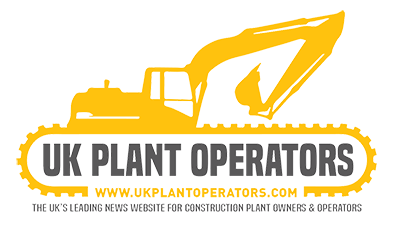![]()
Simulation training technology has made significant advancements over the years. By incorporating motion platforms and realistic elements, simulation training offers an immersive experience that enhances operator confidence, reduces incidents on the job site, accelerates learning, cuts costs, and boosts productivity. Ultimately, it’s an investment that prioritizes the people who work for your business.
Co-written: Mary Lee Shalvoy, Director of Product Marketing, Christa Fairchild, Product Marketing Manager, CM Labs Simulations Inc.
Approved in Germany Operator Certification Exams
In September 2021, German Statutory Accident Insurance (DGUV – Deutsche Gesetzliche Unfallversicherung) issued report FBHL-019 allowing the use of simulation systems for the qualification of heavy equipment operators. DGUV, the organization that oversees the use of simulation for heavy equipment training in Germany, helps companies and educational institutions with a broad range of prevention measures and services.
In a live demonstration of its simulator at Bauma 2022, in Munich, Germany, CM Labs successfully trained and tested Patrick Schultka, who had some prior experience in earthmoving equipment but no experience with cranes, for crane operator certification.
This remarkable accomplishment was made possible by the simulator’s exceptional ability to authentically replicate the behaviour of real machinery and materials.
Matthias Mueller, Management Safety Engineer and owner of AST (Arbeits Sicherheit & Technik, a recognized educational institution), supervised the live crane operator certification at CM Labs’ booth and documented the process. AST has been using CM Labs simulation training for the past two years to qualify operators in accordance with DGUV guidelines.
According to the DGUV report’s stipulations, the simulated curriculum must include realistic use of the equipment, real-world scenarios to reinforce correct safe working interactions and habits, and problem-solving scenarios to establish good judgment for safe operation and avoiding near collisions and injuries.
However, not all training simulators are created equal. So, how can you identify the training solution that meets all of these criteria? The answer lies in immersion. Immersion is a key feature that ensures the success of a simulation.
Consider a trip to the movie theater. The large screens, high-quality sound system, and reclining seats that vibrate with the sound provide an environment that immerses you in the movie. You become a part of the story, engrossed in the characters and their journey.
Simulation training requires the same level of realism to be effective.
If the experience feels believable and the trainee is immersed in it, they will take the training seriously. On the other hand, if the simulator does not accurately represent the equipment or work environment, it loses its believability and it does not help in achieving desired results. If the trainee perceives it as a game, they might adopt reckless behaviour and develop bad habits. This is what we refer to as negative training.
From an operational standpoint, using equipment roughly or abruptly puts strain on its components, leading to maintenance issues in the future. Destructive operating behaviour is sometimes difficult to identify on the live machines, but a simulator makes it easy to detect. Over-revving the simulator’s gas pedal or needlessly rocking the equipment critically impacts cycle time and waste excessive fuel.
The Components of Immersion
Several components of immersion contribute to creating the perfect simulation environment. One of these components is visual accuracy, including the quality of graphics. The field of view in the simulator also plays a crucial role in the learning experience.
For example, lighting and shadows are often overlooked aspects of our everyday lives. We perceive a 3D world as a collection of objects interacting with each other. However, what truly makes us feel present in that world is how light interacts and bounces off objects, as well as the quality of the shadows.
All these details enhance the visual fidelity and realism of the simulation. If the visuals are inaccurate or of low quality, it breaks the immersive experience, and trainees are less likely to take the training seriously.
While visuals and graphics are important for immersion, the realism and physics behind equipment simulations allow trainees to seamlessly transition from the simulator to actual equipment. An inaccurate cable system fails to teach the novice operator how to skilfully control the pendulum, especially when faced with fluctuating weather conditions and varying loads. This discrepancy detracts from the training experience. An immersive system accurately replicates the movements of real-world equipment on the screen.
In a class at one of CM Lab’s crane vocational training school customers, the instructor skillfully manipulates the Instructor Station, generating unexpected faults and tweaking the weather parameters. By adjusting the environment settings to simulate daylight, he teaches the importance of utilizing peripheral vision to align the shadows of the hook and block.
This connection made the simulation much more believable and instilled an additional layer of trust that the equipment simulation faithfully replicated the behaviour of the physical equipment.
Trainees gain a better feel for engine transmission, crane boom, and jib bending/torquing, as well as wire rope and crane block spin, and environmental factors (like wind, precipitation, day and night settings). Learning hook and load management, reducing pendulums, snags, and collisions, operators improve cycle times, and which can ultimately reduce production costs.
Another layer of immersion is haptics, which relates to the sense of touch. Controls are a significant component of haptics in simulations. Whether it is a joystick, a steering wheel, or a pedal in the machine, the control device to be realistic, not just in terms of quality, but also in terms of the number of buttons and layout, accurately representing real equipment.
RMPs movement – feel the seat
When the controls are representative, trainees gain an understanding of how the equipment will respond. It is akin to learning to drive one car and then applying those skills to another car. When the foundation is the same, skills become transferrable to other equipment.
Motion is another crucial haptic component. Some simulators have moving seats, while others have platforms beneath the seat that move. In either case, trainees receive feedback through some form of motion. Haptics helps operators learn how the equipment reacts. For example, if you are lifting something high on a forklift and notice that the back is slightly lifting off the ground during a poorly executed operation, you know that you are entering a dangerous situation.
The final piece of immersion is sound. Operators must learn to listen to the equipment they operate to anticipate what to expect and what to avoid. Operators need to hear the engine’s roar when operating an excavator.
It is important to hear true engine sounds, like RPMs or engine idling. Other typical sounds on a job site, like alerts and horns, are critical audio cues for safe operation and productivity. When the equipment simulation accurately reproduces the sounds of real equipment and the surroundings, it adds an extra dimension to the experience.
Replicate the behaviour of real-world machinery
CM Labs simulation technology’s unparalleled ability to faithfully replicate the behaviour of real-world machinery and materials made the DGUV certification at Bauma possible. CM Labs accurately replicates real-world machine and materials behaviour, resulting in effective, efficient operator training. The company’s patented authentic engineering-grade machine behaviour exceeds the technical criteria for German certification and provides real data accuracy and reporting insights.
Composed of proprietary and patented algorithms, the simulation delivers careful modeling and reproduction of machine data that interact with the environment and materials just as they do in the real world. Its precision is backed by more than 20,000 automated daily tests and ongoing research and development.
Achieving immersion in simulation training is essential for its success. Immersion enhances the trainee’s experience by making it believable and engaging, leading to a more serious and focused approach to training.
By prioritizing immersion in simulation training, businesses can maximize its benefits, including increased operator confidence, reduced incidents, accelerated learning, cost savings, and improved productivity.























